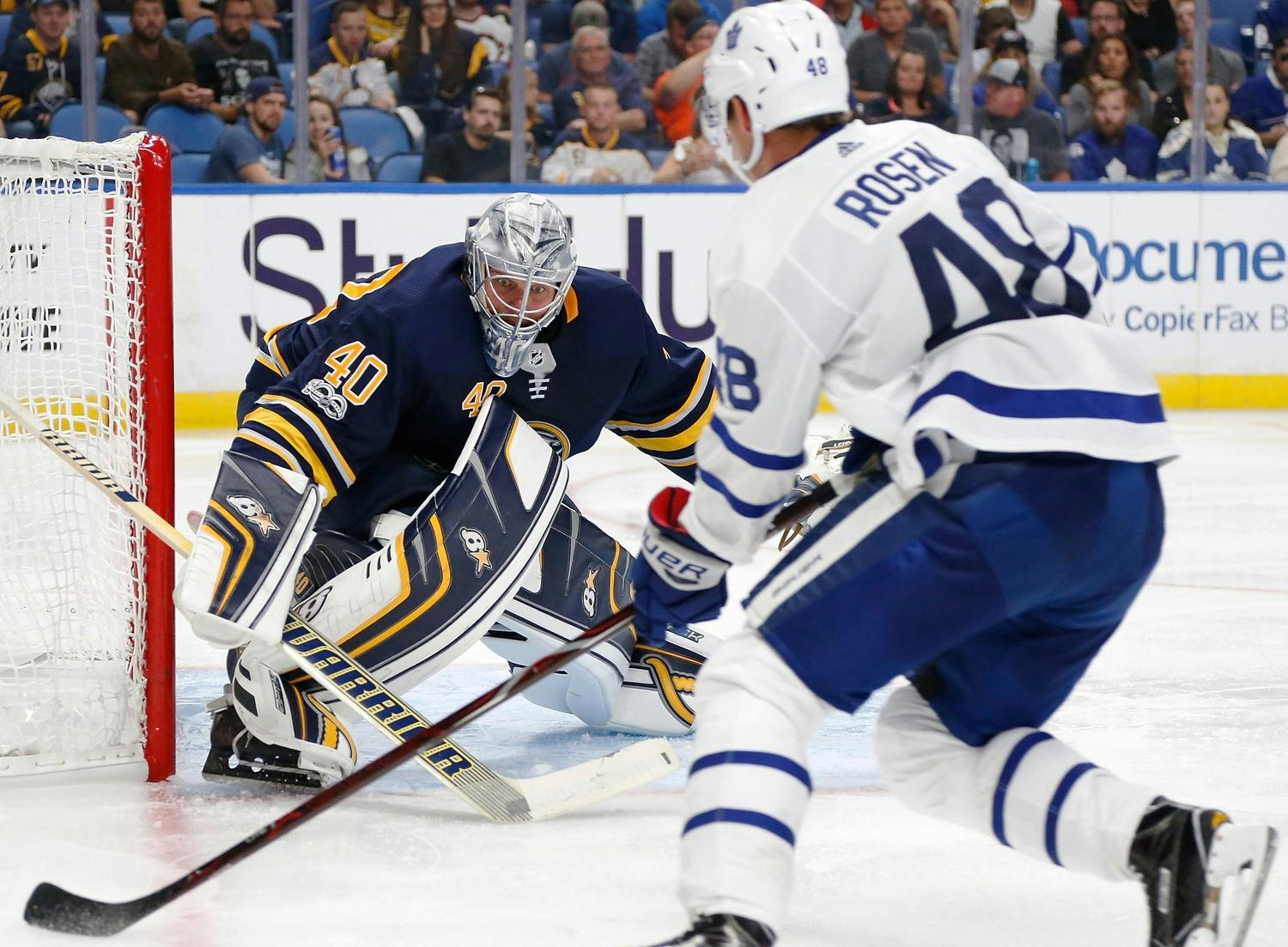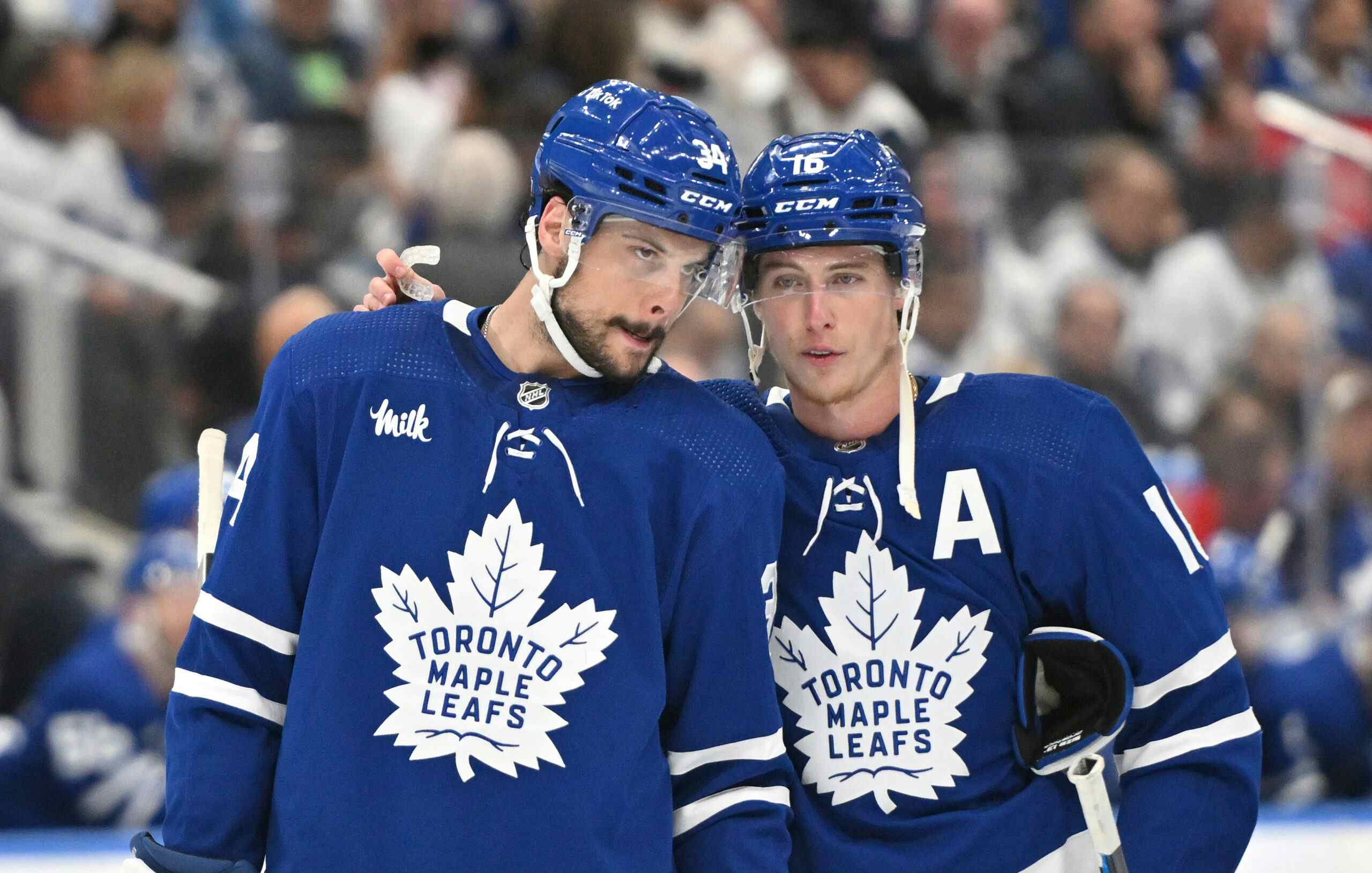The Leafs’ Have Remodeled Their D; What Can We Expect?

By Ryan Hobart
6 years agoThis offseason, the Maple Leafs had basically one job: figure out a better group of defensemen to complement their elite offensive group. To do this, they made 2 moves.
First, they brought in Calle Rosen and Andreas Borgman from Sweden. Two young players that came in with the expectation of being Marlies, but are now finishing camp appearing to both be in very strong contention for an NHL job.
Second, they signed Ron Hainsey. The Cup-winning, short-time Pittsburgh Penguin, former Carolina Hurricane comes over to the Leafs to attempt to replace some of the veteran presence lost in letting Roman Polak and Matt Hunwick go unsigned.
That’s not a lot of change – but is there an improvement?
Ron Hainsey
The addition of Ron Hainsey does two things for the Maple Leafs. First and most obviously, it replaces the hole left by Matt Hunwick. Second, and also fairly obvious now, is it brings a new partner for Morgan Rielly.
Every indication has been that Hainsey and Rielly will pair up to form a similar partnership that Hunwick and Rielly had two years prior. Last season, Rielly played almost every game alongside “rookie” defenseman Nikita Zaitsev on the top pairing. How will this change affect Rielly?
The first thing to note is that it appears that Rielly will not be on a shutdown pairing anymore. We saw near the end of last season that when Rielly was moved off of Zaitsev’s pairing, it was Zaitsev who remained in shutdown minutes, and not Rielly. That trend has continued this pre-season.
- Morgan Rielly – Even Strength TOI: 11:45
- Jake Gardiner – Even Strength TOI: 15:37
Since this is the preseason, there are more factors that play into Even Strength ice time than simply pairing number, especially in the early games. But this trend continued into the last 1st team preseason game, Friday’s game against the Red Wings. Rielly had 13:12 minutes of 5-on-5 icetime, whereas Jake Gardiner got 18:10. Together this is a strong indicator that Hainsey and Rielly will be the 2nd pairing, a much more favourable position for them.
Hainsey comes in as a player who we know is a bottom-four defenseman. Rielly, while extremely talented, has had many opportunities to play top pair minutes, and has consistently floundered defensively. Moving him into a more suitable 2nd pair role is the best thing right now for his development.
This also gives the Leafs the opportunity to play their best defenseman – Jake Gardiner – more minutes. This can only be a good step towards having a defense that doesn’t bleed shot attempts the way the team did last year.
The last thing that the Hainsey acquisition allows is for Connor Carrick to move into a bottom pairing role where he, and Mike Babcock, are more comfortable. Carrick is a very talented player who did very well with Gardiner last season, but that pairing was likely carried by Gardiner’s puck moving ability. Additionally, towards the end of the season, there were clear frustrations with Babcock and Carrick, as Babcock heavily limited Carrick’s usage in the playoffs. Being a bottom pairing defenseman is probably a better situation for him to get in and stay in as an NHL defenseman.
Calle Rosen and Andreas Borgman
At the time I’m writing this, it is unclear which of these two players has won the 3rd left defense role. But all appearances are that it will be one of them, as they played together in that last 1st team preseason game, and have both impressed Mike Babcock.
These two players came in as largely unknown products, but have been very impressive thus far. Rosen struggles a bit on the defensive side of the puck, but with Carrick on the 3rd pair they will be given very sheltered minutes (as Hunwick and Polak were given the year before). It could be a situation where he strives offensively.
On the other hand, Borgman comes in as the more defensively capable of the two. He plays physically as well, which will no doubt attract the love of the Toronto fanbase. Borgman is no slouch offensively either, scoring only slightly less than Rosen did in the SHL last season.
For more information on the players, please read the prospect write-ups done as part of TLN’s Top 20 Prospect rankings, Borgman here, and Rosen here.
The key difference between the new bottom pairing and the old one is that, while both need some sheltering defensively, the Rosen/Borgman/Carrick trio will be far better at getting the puck to the Leafs’ talented forwards than their predecessors. It may not result in better possession metrics, as they will likely bleed shot attempts just as much as Hunlak did, but the goal scoring should be much more efficient with them on the ice.
Defensive Game
One of the two primary goals of the defense is to prevent the other team from scoring (the other being to help the forwards score themselves). The known best way to achieve this is to prevent shot attempts against. So is this new D any better at that?
Let’s compare the other 5 players in the current Leafs’ D to the 5 used in the previous year:
| Role | New Player | CA60 for 2016-17 | Previous Player | CA60 for 2016-17 | Net |
| 1LD | Jake Gardiner | 56.10 | Morgan Rielly | 58.70 | +2.50 |
| 1RD | Nikita Zaitsev | 59.80 | Nikita Zaitsev | 59.80 | 0.00 |
| 2LD | Ron Hainsey | 56.50 | Jake Gardiner | 56.10 | -0.40 |
| 2RD | Morgan Rielly | 58.70 | Connor Carrick | 55.20 | -3.50 |
| 3LD | Rosen/Borgman | n/a | Matt Hunwick | 56.50 | n/a |
| 3RD | Connor Carrick | 55.20 | Roman Polak | 60.00 | +4.80 |
| Total: | +3.4 |
If Rosen and Borgman can be around the same as Matt Hunwick, then overall the Leafs have made a stark improvement. That is by far the biggest question.
Offensive Game
What about the other primary goal, to help the offense?
That’ll be a tougher question to answer. I’ll refrain from doing a similar chart to above, as the players look very similar in shot generation as they did in shot prevention, numbers wise. The big question comes again to be what impact Rosen and Borgman will provide.
We know that Hainsey isn’t exactly a stellar offensive defenseman, but he did provide more CF60 (shot attempts for) than Hunwick did last season. This is without considering team effects, where the Leafs were one of the most dominant CF60 teams in the league, which would no doubt have benefited Hunwick. So there’s a notable improvement.
Additionally, there shouldn’t be any question that Rosen and Borgman will provide an improvement upon Roman Polak when it comes to offense. If anything, defense is Polak’s game, so Rosen’s quick shot and good skating, and Borgman’s power and excellent passing, should help in that regard. It’s just unfortunate I can’t really quantify it. The best we have is NHLe, a project of what players will score in points/game based on how previous players have translated from that league.
What we have is:
| Player | Points/game | Points in 82 game season |
| Polak | 0.15 | 12 |
| Rosen | 0.30 (NHLe) | 25 (NHLe) |
| Borgman | 0.22 (NHLe) | 18 (NHLe) |
It’s a marginal improvement, but it’s definitely notable. And as I explained above, it shouldn’t surprise anyone that Rosen and Borgman are better than Polak offensively.
Final Thoughts
I sincerely believe that this Maple Leafs defense is notably improved from last season. While the moves were not earth-shaking, they made positive impacts outside the obvious, allowing the Leafs to shift the players around to more suitable roles.
The additional depth wasn’t even touched on here, but after last season’s magical fluke of limited injury concerns, the Leafs were right to add more bodies to insure that there’s many options to fill in for injury.
All in all, I think the Leafs will be a lot better at preventing shot attempts, and will have even more opportunities to generate offense from the back-end.
Recent articles from Ryan Hobart





